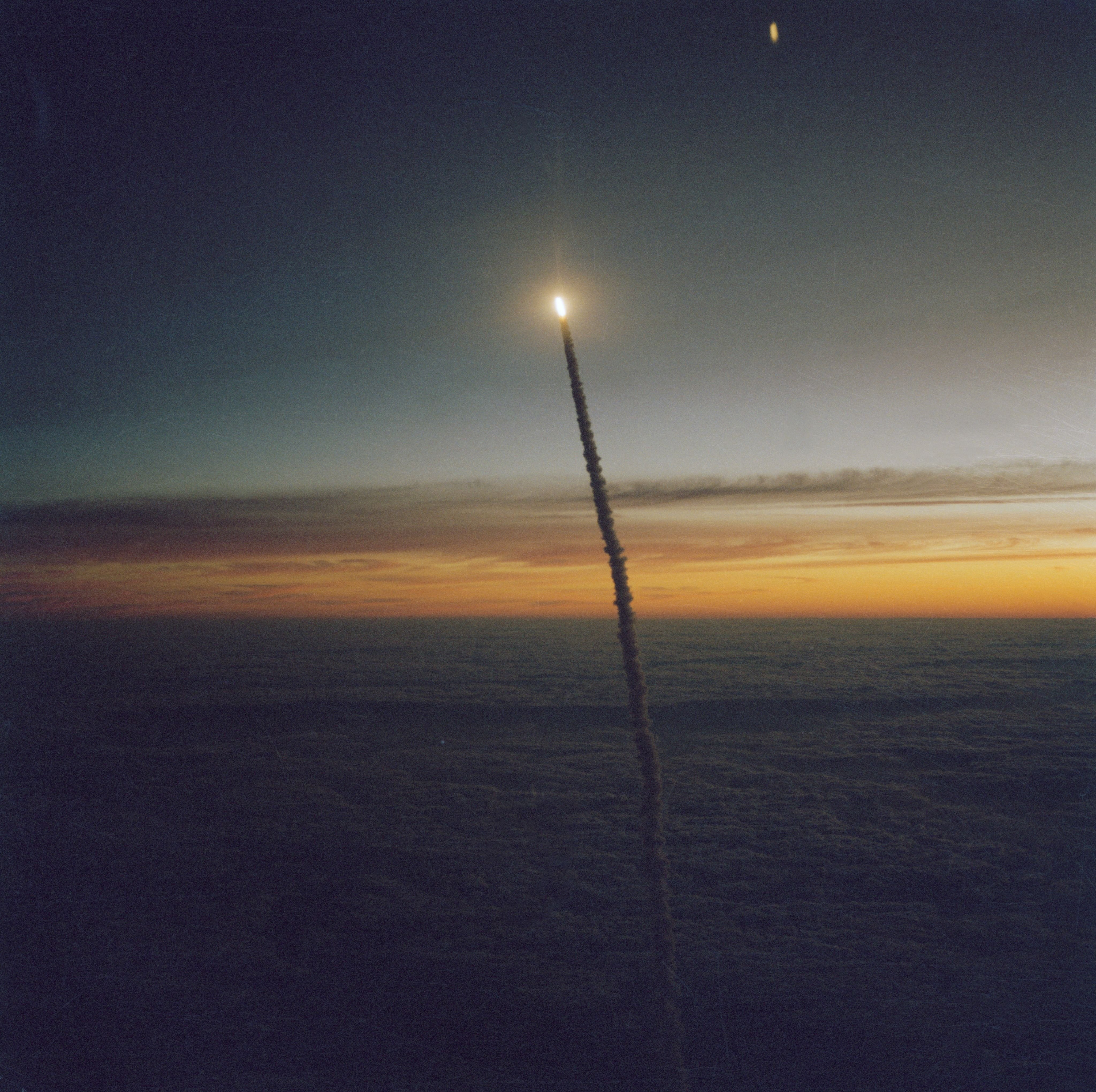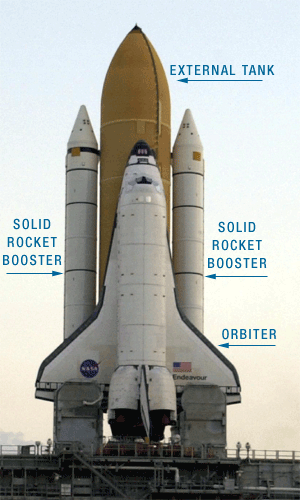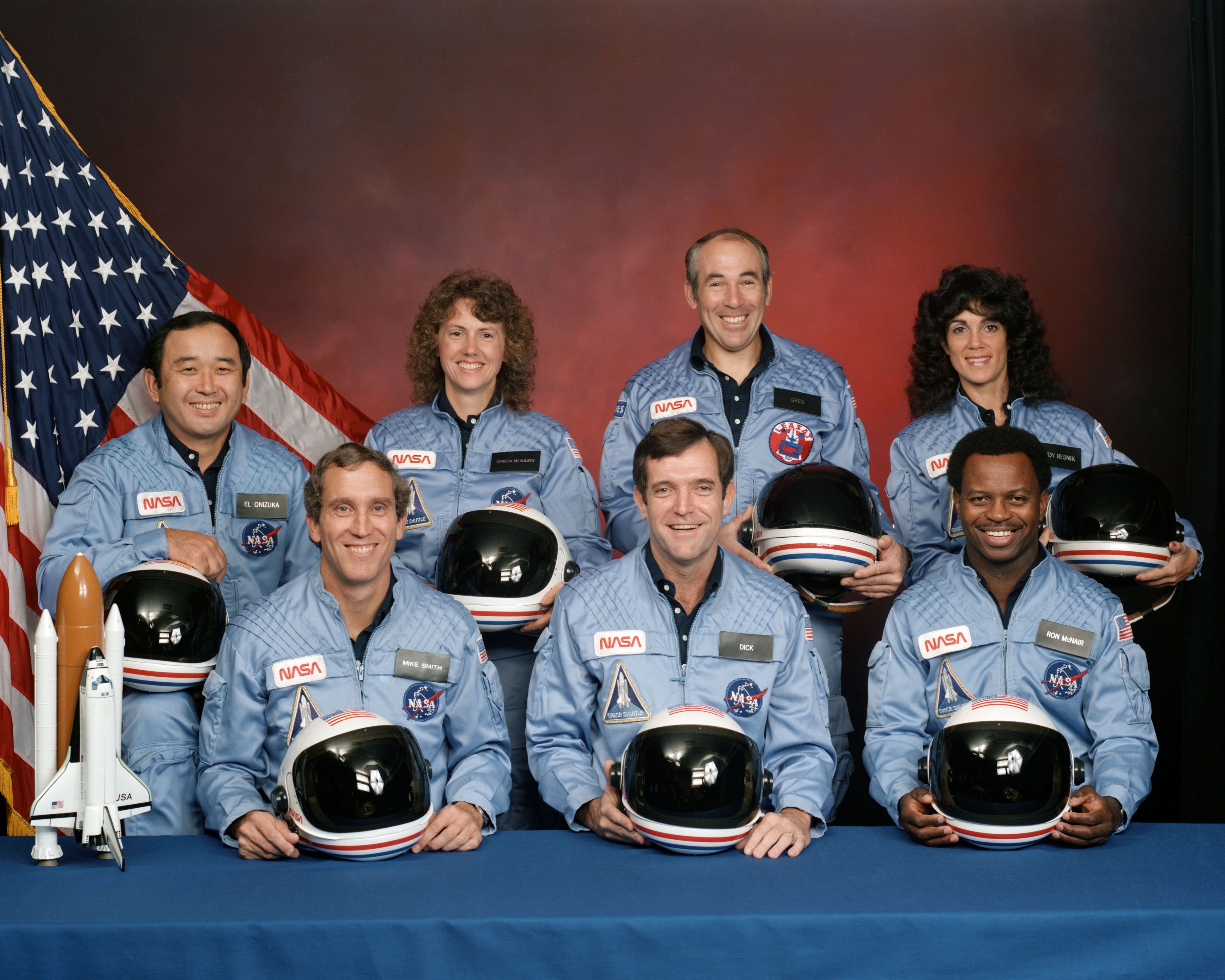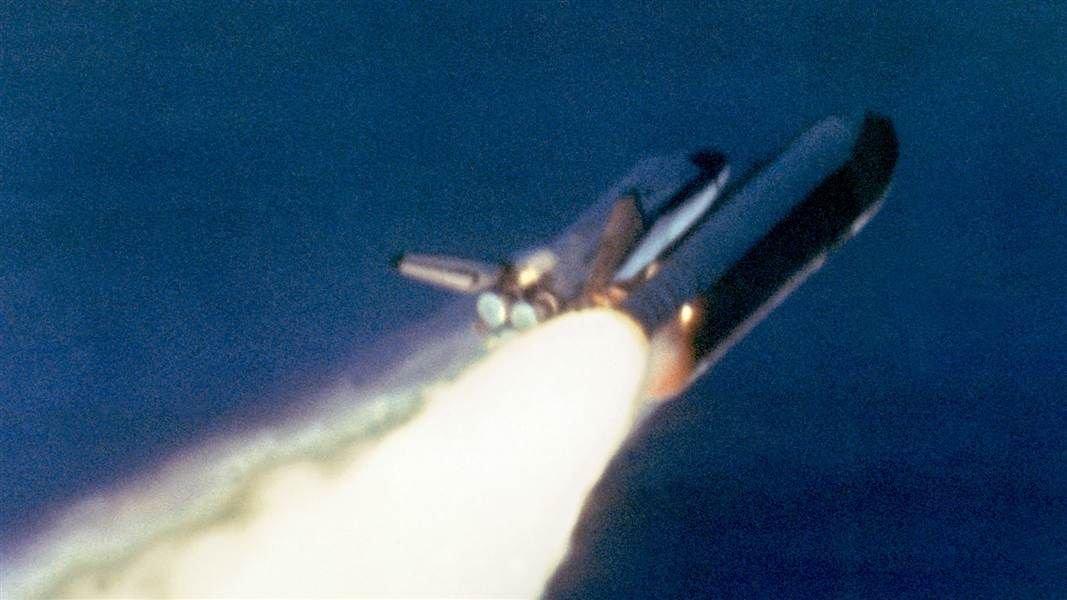The 50th anniversary of the Apollo 1 fire was just a few days ago. With this disaster back in the news, I decided a three part series on some of NASA's most infamous disasters could be timely. While almost everyone has heard of these events, there's more to the story than just what gets in the news. Going back over these tragedies is important. There is a lot to learn from our failures, and no one would want mistakes repeated. I do my best to keep the lessons learned from these events in mind as I do my own engineering work. While I don't get to work on spaceships, I want to avoid mistakes in my own work.

October 5, 1984 flight of Space Shuttle Challenger
NASA recovered quickly from the Apollo 1 fire covered in Part I. Subsequent Apollo flights safely carried astronauts into orbit and to the moon. Having reached the moon, NASA's next goal was a reusable spacecraft - the space shuttle. From 1981 through 2011, five space shuttles ferried astronauts into space and back. A total of 135 missions were flown by the space shuttle fleet consisting of Columbia, Challenger, Discovery, Atlantis and Endeavour[1].

A little background on the program: The Space Transportation System (STS), which was the official name for the space shuttle, consisted of the orbiter vehicle (OV), twin solid rocket boosters (SRBs), giant external fuel tanks (ET) and three space shuttle main engines (SSMEs). Out of all these parts, only the external tanks are not reused. The space shuttle was a huge step up in terms of complexity from the Apollo program, with approximately 2.5 million moving parts[2].
This article focuses on the second shuttle, the Challenger. Like the other shuttles, Challenger was named after a historic ship. In this case, the shuttle was named in honor of the HMS Challenger that sailed in the 1870s. As the second operational shuttle, Challenger's first flight was April 4, 1983[2]. Challenger hosted several firsts during its flights including the first jetpack used on a spacewalk and the first satellite repair in orbit[3].
On January 28, 1986, Challenger launched from Cape Canaveral on mission STS-51-L. Seven crew members were on board: commander Francis R. Scobee; pilot Michael J. Smith; mission specialists Ronald McNair, Ellison Onizuka, Judith Resnik; payload specialists Gregory Jarvis, Christa McAuliffe [4]. The last member, Christa McAuliffe, was a special addition to the crew. McAuliffe was selected as part of NASA's Teacher in Space project. As the first private U.S. citizen to enter the space program, McAuliffe documented her training for students everywhere [5]. This would make the events to come even more awful, as young children tuned in live to see the first teacher in space[6].
Just 73 seconds after takeoff, Space Shuttle Challenger broke apart. The lives of all seven crew were lost. A truly tragic event for the country and space exploration. Ultimately, the cause of the explosion would be linked to one small O-ring in the right SRB. Pressurized gas was allowed to escape from the joint, causing adjacent hardware to fail. This small leak cascaded into a total break up of the space shuttle. While part of the orbiter vehicle remained intact, there was no way for the crew to eject [7].

STS-51-L crew: (front row) Michael J. Smith, Dick Scobee, Ronald McNair; (back row) Ellison Onizuka, Christa McAuliffe, Gregory Jarvis, Judith Resnik. Wikimedia Commons.
One little O-ring seal caused a terrible disaster. In my own work as a materials engineer, I often deal with elastomer testing. For underhood automotive applications (my own field), materials need to survive from -40 C to +140 C. That's because cars can be sold anywhere from Alaska to Hawaii. For the warm weather launch pad at Cape Canaveral, NASA did not have any sort of low temperature requirements. The unusually cold weather on the date of the launch caused the O-ring to become brittle and hard. Morton-Thiokol, the space shuttle motor contractor, had selected FKM as the material for its O-rings[8]. FKM (a fluorine based elastomer) was originally developed by DuPont in the 1950's for the aerospace industry. FKM has great high temperature resistance, excellent chemical resistance, low gas permeability and good weathering resistance [9]. One glaring omission from this list is low temperature performance.
The main factor controlling low temperature performance is the glass transition temperature (Tg). This is the temperature at which a material changes from rubbery to glassy. The main difference between polymers and elastomers (rubbers) is that polymers have a Tg above room temperature while elastomers have a Tg below room temperature. If an elastomer does get cooled below it's Tg, it will lose its elastic properties [10]. This is what happened to the FKM O-rings in the Challenger disaster.

Image showing ignition on the right SRB
Why did no one consider the low temperature performance of a critical sealing interface? The potentially surprising answer is that several engineers at Morton-Thiokol did just that. The morning before the ill-fated launch, Bill Ebeling, an engineer at Morton-Thiokol, called his boss to warn about the dangerous of a cold launch. Despite pages of data and a clear picture of the danger, Ebeling and a few fellow engineers were unable to stop the launch. In an eerily similar situation to the Apollo disaster 20 years earlier, NASA and Morton-Thiokol prioritized staying on launch schedule over the safety concerns of its engineers. Ebeling would carry his regret for the disaster for the rest of his life [11]. Once again, NASA failed to take the safety warnings of its engineers seriously. Seven astronauts paid the price for this "organizational blindness". The Space Shuttle program was grounded for 32 months while the cause of the disaster and potential solutions were investigated. One of the investigators, famous physicist Richard Feynman, wrote of how NASA's top executives lacked understanding of basic concepts[12]. Ultimately the O-ring design was corrected, and the space shuttle program continued flying missions.
Image sources: 1, 2, 3, 4
I entered this post into the first ever @SteemSTEM writing competition. SteemSTEM is a great account that curates science related posts. I recommend you check them out! Follow me for the final part later this week and, as always, you can email me directly - Vir@tutanota.com
